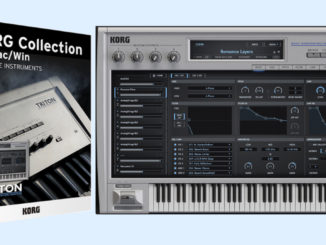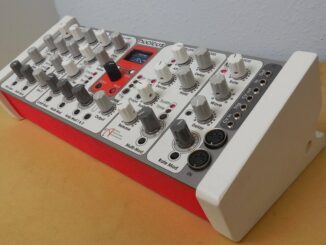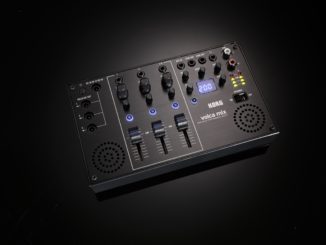NAMM 2025: Korg multi/poly module is the desktop version of its latest digital Synthesizer, which reimagines the iconic Mono/Poly from 1981.
Last October, Korg released the Multi/Poly, another Synthesizer in its digital synth series. It is modeled on the iconic Korg Mono/Poly 4-oscillator analog Synthesizer but enhanced with modern features. This includes a multi-timbral engine, more waveforms, new filters, effects, Kaoss Physics, and more.
Already at the release, the desire for a module version arose. Korg is now fulfilling this need at NAMM 2025, where it will show the multi/poly module.
Korg multi/poly module
The multi/poly module version offers the same features as the regular version. Instead of the keyboard, it comes in a new 19″ desktop/rack-mountable enclosure with the same controls as the keybed model.
Korg multi/poly module is a Synthesizer that brings the concept and sound of the classic Mono/Poly Synthesizer from 1981 to the modern digital age, using the company’s latest analog modeling technology.
It’s not the best-known Mono/Poly plugin for macOS/Windows in a hardware shell. Like the keyboard, the Korg multi/poly module offers a newly developed engine that uses various Mono/Poly vintage analog synth elements.
Highlights
- up to 60 voices
- four layers (4-time multitimbrality), each with a separate program, for dynamic layering and split sections
- each program with four oscillators (Classic, Digital, and Waveshaper types)
- noise generator and ring mod for added sonic complexity
- dual-modeled filters with audio-rate modulation (M/Poly, MS-20 lowpass/highpass, Minimoog…)
- layer rotate for evolving sound variation
- four loopable DAHDSR envelopes with different modeled versions (Mono/Poly, MS-20, Odyssey, Mini, Pro, Linear…)
- five LFOs
- six mod processors per program
- motion sequencing 2.0 (parameter animation) for complex, per-voice modulation
- Kaoss Physics with a dedicated hardware touchpad for interactive, hands-on modulation
- portamento models: Constant Rate, Constant Time, Vintage Linear, Vintage Mini, Vintage Exponential, Vintage MS-20
- over 5,500 modulation destinations
- three studio-quality effects per layer plus master reverb and parametric EQ
- built-in Editor/Librarian software for macOS and Windows with real-time modulation visuals
- MIDI 2.0 property exchange with full support for MIDI 2.0 property exchange and polyphonic aftertouch support
Connectivity
On the backside, you get a power supply input, classic 5-pin MIDI in/out, USB for data, an expression pedal input (damper), balanced stereo outputs, and a headphone socket.
It’s a shame that Korg doesn’t incorporate a USB host port in the multi/poly module, which would allow you to connect a MIDI keyboard with a standard USB cable. This is a criticism I have made with every desktop release (modwave, wavestate, opsix) so far. I hope they change that one day.
Since the official release, numerous user sound demos have also been released, and what you hear there sounds very good and powerful.
Korg multi/poly module First Impression
A module version of the Multi/poly was in the air. I’m pleased that Korg is following up quickly with the desktop/module.
Korg multi/poly module is available soon for £709.
More information here: Korg







VST incoming (hopefully) next
The plugin version has already been announced.
Good to see that Korg have finally got the message that many of us will ONLY buy a desktop module without the keyboard. However, this is still waaaay overpriced. I’ll be waiting for it to drop to the £500 max before buying, just like the Wavestate, OpSix and ModWave.
Umm. Companies always release products at a full MSRP and then give rebates and discounts to dealers to allow them to reduce the cost over time. If you don’t want to buy at full price, wait.
Does this integrate live with the VST (ie, can I save hardware presets in the VST state and modulate via the DAW to the VST)
It seems to be like with the Opsix. Presets can be used with the hardware and VST but no direct integration between the plugin and hardware. The hardware uses its own separate library manager software.
I’m not sure about this Korg line because the software siblings are doing 100% the same and cost much less.
The user into face of the hardware is not good enough for me to give enough reasons to spend 900 bucks
With 4 layers, similar to the A1, I thought it might have more than a stereo output. Would have been nice for 2 stereo outs or 4 mono’s.